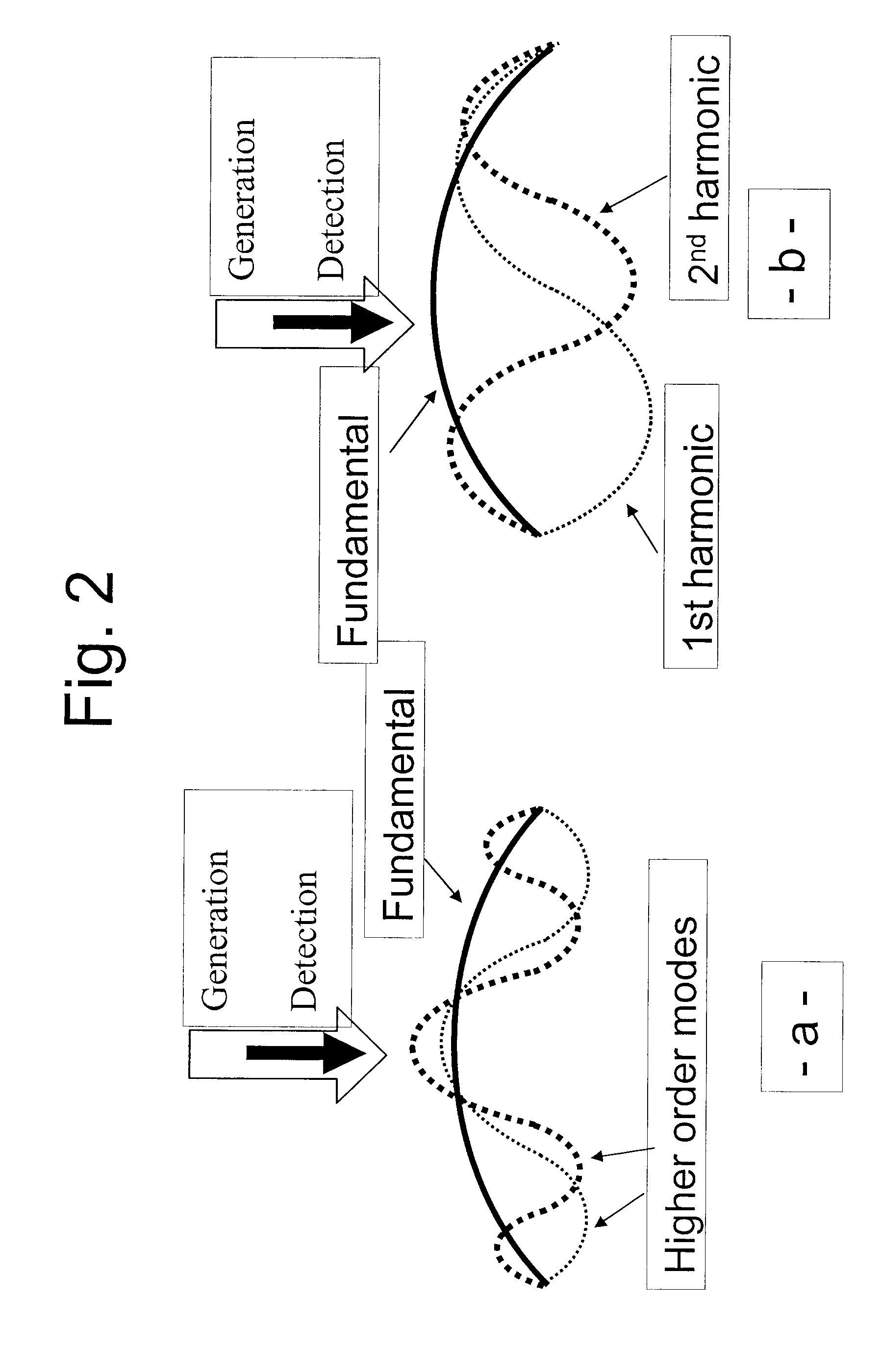Method of Assessing Bond Integrity in Bonded Structures
a bond integrity and bonding technology, applied in the direction of material analysis, instrumentation, and solid analysis using sonic/ultrasonic/infrasonic waves, can solve the problems of poor bond integrity, poor bond integrity, and few techniques that can be applied to honeycomb or foam core-structured materials, etc., to achieve a thorough and reliable inspection
- Summary
- Abstract
- Description
- Claims
- Application Information
AI Technical Summary
Benefits of technology
Problems solved by technology
Method used
Image
Examples
example 1
Honeycomb Carbon Epoxy Test Sample
[0082]Example 1 is an application to a carbon epoxy honeycomb structure with artificially produced delaminations in the skin, and skin-core detachments. A schematic illustration of the location of the defects is shown in FIG. 4, and a picture of the test sample is shown in FIG. 5.
[0083]The experimental setup as shown in FIG. 3a is used. The generation laser employed is a CO2 TEA laser which delivers pulses of about 100 mJ energy and 120 ns duration at 10.6 μm wavelength makes the detached area lift up and vibrate like a membrane clamped at its edges. It also generates ultrasonic waves. The excitation mechanism in this case is purely thermoelastic, and non-damaging. The detection laser is a pulsed single frequency Nd:YAG laser which delivers pulses of about 50 mJ energy and 65 μs duration at 1.064 μm wavelength, and the laser detects both the vibration and ultrasound echoes. The detection laser light scattered off the surface of the inspected part is...
example 2
Anti-Wear Tungsten Carbide-Cobalt Coating on Steel
[0093]With reference to FIGS. 12 and 13, example 2 demonstrates the detection of detachment of a Tungsten Carbide-Cobalt (WC—Co) coating on steel, although the technique is applicable to the detection of disbonds between an exposed first layer overlying a second material in general. These coatings are currently developed for replacing hard chromium coatings, which are at the source of known environmental problems. They are used on parts such as aircraft landing gears. These parts are subjected to fatigue cracking. Fatigue cracks may lead to detachment between the coating and the substrate, which are likely to follow by complete coating peel-off leaving the substrate unprotected from corrosion. Therefore the detection of such disbonds is very important.
[0094]In this case, the generation spot and the detection spot were slightly offset by about a spot size. In FIG. 12 one observes the arrival of a surface wave followed by a featureless...
example 3
Silicon Carbide Protecting Layer on a Carbon-Carbon Substrate
[0095]Example 3 shows the detection of detachments occurring between a SiC oxidation protecting layer and a C—C substrate. Carbon-carbon substrates are widely used as thermal shields in rocket engines and on fuselages of space vehicles, such as the U.S. space shuttle. Since carbon is prone to reaction with oxygen above 450° C., C—C materials are generally protected by a ceramic coating such as one made of silicon carbide. The coating being porous, with time voids are produced by oxidation. If these voids grow bigger, the coating could get detached leaving the C—C substrate unprotected and subjected to severe oxidation. Therefore, the detection of disbonds between the coating and the C—C substrate is important.
[0096]These coatings are however porous and strongly attenuate ultrasound, so pulse-echo ultrasonics does not work. Actually this approach was tried on the C—C sample used and no echo was observed. However, with the t...
PUM
 Login to View More
Login to View More Abstract
Description
Claims
Application Information
 Login to View More
Login to View More - R&D
- Intellectual Property
- Life Sciences
- Materials
- Tech Scout
- Unparalleled Data Quality
- Higher Quality Content
- 60% Fewer Hallucinations
Browse by: Latest US Patents, China's latest patents, Technical Efficacy Thesaurus, Application Domain, Technology Topic, Popular Technical Reports.
© 2025 PatSnap. All rights reserved.Legal|Privacy policy|Modern Slavery Act Transparency Statement|Sitemap|About US| Contact US: help@patsnap.com



